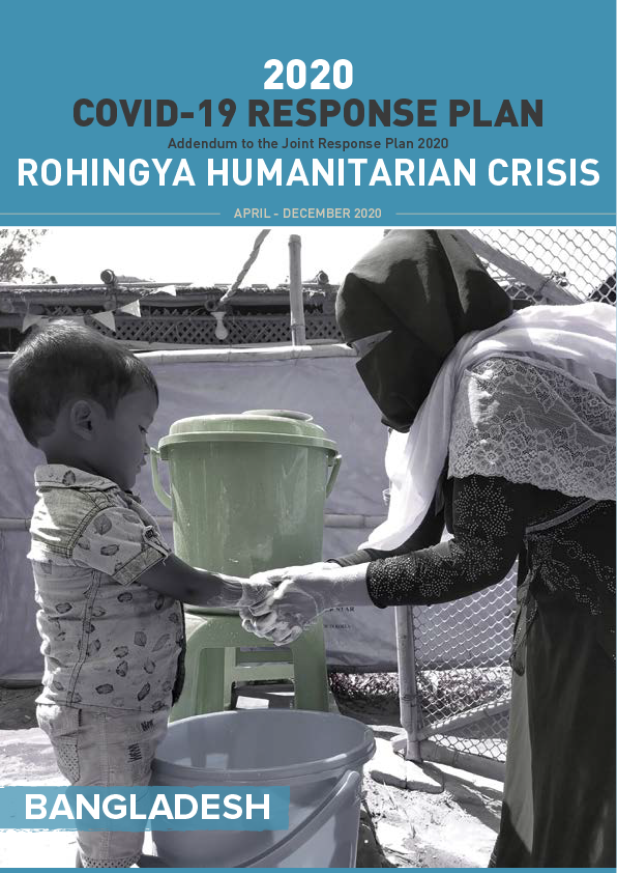- 2020 COVID-19 Response Plan – Addendum to the 2020 JRP
Summary:
As of 28 June, Bangladesh had reported 133,978 confirmed COVID-19 cases,2 2,526 of which had been identified in Cox’s Bazar District, including 50 Rohingya refugees.
Cox’s Bazar District is at extreme risk, given the highly congested conditions in the refugee camps, the high levels of vulnerability among the Rohingya refugee and Bangladeshi communities, and a national healthcare system that was already under severe strain before the COVID-19 pandemic. The Government and humanitarian partners have mobilized to mitigate and respond to the impact of the virus on the Rohingya refugees and Bangladeshis that live in Cox’s Baz ar District. Some 860,000 Rohingya refugees currently reside in 34 highly congested camps formally designated by the Government of Bangladesh in Ukhiya and Teknaf Upazilas of Cox’s Bazar District; these refugee camps are among the most densely populated places on earth, and the overcrowding and unhygienic conditions increase the potential for the rapid spread of communicable diseases.
The Rohingya refugee population is entirely reliant on humanitarian assistance. It is essential to sustain the response for pre-existing, priority humanitarian needs, while strengthening and complementing it to address the additional response requirements from the COVID-19 pandemic and its impact on the overall protection environment. Travel restrictions driven by public health imperatives and global supply constraints present serious challenges. A surge in personnel– particularly medical experts – and the delivery of critical supplies and equipment are urgently required to scale up the response, including the creation of new COVID-19 treatment facilities. Even all targets set in this plan are realised, the number of refugees and local Bangladeshis needing hospitalization will likely far surpass the availability of beds.

